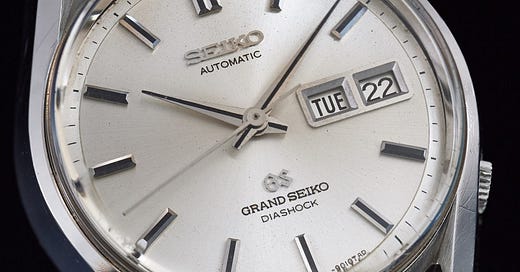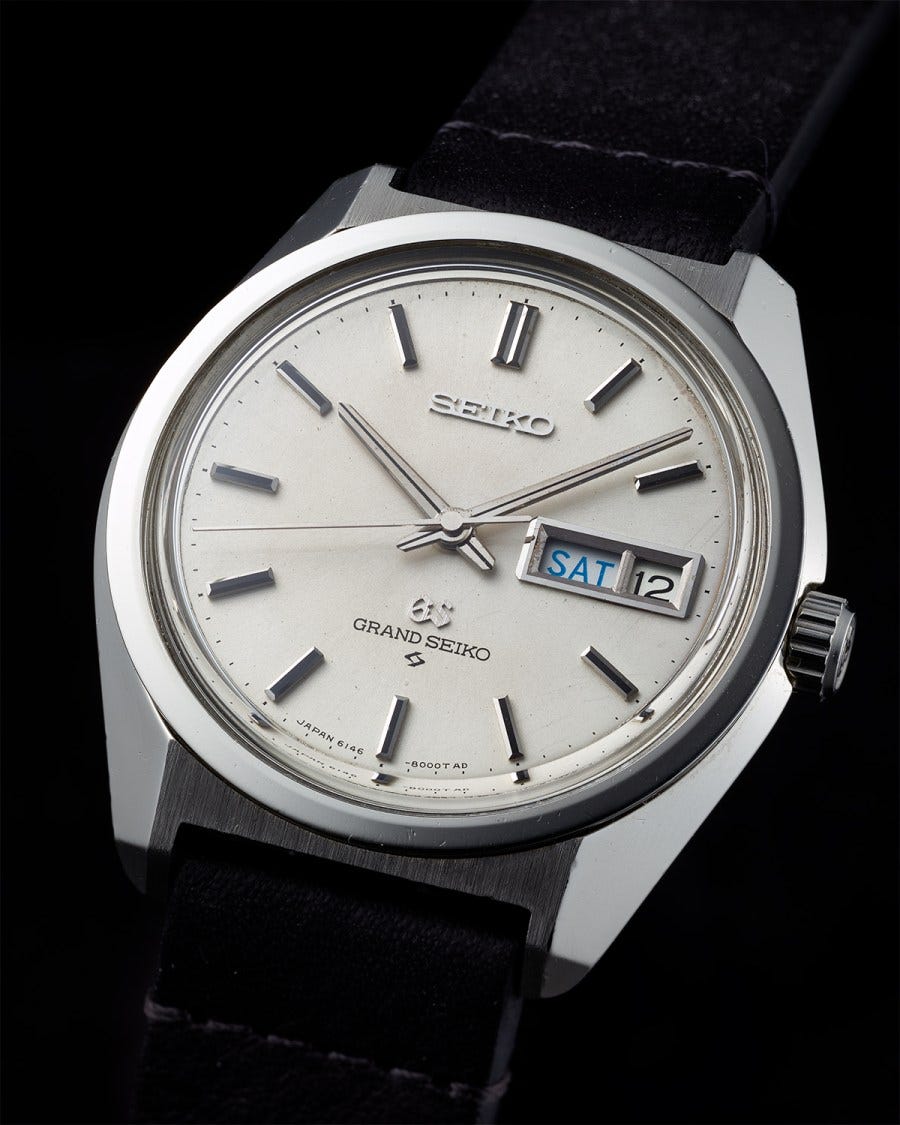Preamble
For the benefit of those subscribers who have signed up recently, over the last half year or so, I have been publishing weekly newsletters featuring scans of vintage Grand Seikos that appeared in the Seiko catalogues of the 1960’s and 1970’s, culminating in a newsletter focusing on the Grand Seiko references for women.
The intention behind this series is to cover in detail every single vintage Grand Seiko, with - where possible - corroborating contemporaneous evidence for the legitimacy of the reference.
Having now covered all the official Seiko JDM catalogues of the period, there is one more major task to fulfill, and that is to document the legitimate references that never appeared in a catalogue.
These references can be broadly grouped into three different categories –
Vintage Grand Seikos that did not appear in the regular catalogues (annual, biannual, supplemental, or Special Luxury), but were featured in other official publications such as Seiko News and Seiko Sales. Examples would include both variants of the 43999.
Vintage Grand Seikos that appear neither in the regular catalogues nor other official publications (to the best of my knowledge following research to-date), but clearly were available for sale to the public based on extensive examination watches in collections and that have come to market over the past decade, and also following consultation with other experts. Examples would include the platinum cased “Firsts”.
Vintage Grand Seikos that were commissioned by third party companies, and would not have been available for sale to the general public. Examples would include the Toshiba 25 year service anniversary models.
Each of the seven men’s vintage Grand Seiko series features references that fall into at least one of these categories. Because there is a lot to cover, I will be splitting this study over the course of several newsletters, structuring the newsletters by series, and then by the above three categories.
In the previous newsletters in this series I covered the “Firsts”, 57GS and 44GS. Here, we take a look at the 62GS references that never appeared in the catalogues.
You can view the previously published newsletters in this series - which is now complete and covers all the vintage Grand Seiko watches appearing in catalogues - here.
Grand Seiko “62” series references missing from the catalogues
The 62GS series references are detailed in two catalogues. The “Number 2” 1967 catalogue (for 1966 and 1967 Seiko didn’t date their catalogues, but simply numbered them 1 for 1966, and 2 for 1967), and the first volume of the 1968 catalogue.
As discussed in the newsletters featuring those publications, whilst the text and description for the watches in the 1967 catalogue detail Grand Seikos, the watches pictured are actually the Seikomatic Chronometers on which the 62GS series was based.
1966 production of the 62GS series can be identified by the -9000 case suffix and lion case back medallion, and 1967/8 production identified by the -9001 case suffix and GS case back medallion. From the dial side however, the different production is indistinguishable. Therefore, I do make the assumption from the catalogue appearances that both -9000 and -9001 cases can be considered to be represented.
There are however two additional example of 62GS references that do not appear in any catalogue nor have I found in any other official publication, and they are peculiar variants of both steel and cap gold cased 6246-9001’s.
Here’s the regular example of the steel cased reference –
Note that the regular version of this watch has fully polished hands and indices. In addition, the top surface of the hands is flat, whereas the top surface of the indices has multiple angled facets.
Grand Seiko 6246-9001 in stainless steel with -9010 dial code
The variants to the references we see in the catalogues can be distinguished by their dials and handsets.
Rather than rely on perfectly black-polished hands and indices to reflect light and thus make the time extremely legible, Grand Seiko appear to be trying out what would undoubtedly have been a much cheaper way to accomplish the same goal. Both the indices and the hands have applied black material on their top surfaces in order to provide contrast with the polished surfaces. The indices have a completely flat top surface, whilst the hands have a much thinner painted top surface, and then the polished surfaces are set at an angle.
The watch can also be identified by its unique dial code, which is 6246-9010T AD – the regular dial code is 6246-9000T AD.
Other examples of the 62GS series, along with all references from earlier series, have fully polished hands and indices. Almost all subsequent Grand Seiko models – starting with the 6145/6-8000 models introduced in 1968’s volume 2 catalogue, pictured below, and which replaced the 62GS series, pick up the same dial index and handset design approach.
Grand Seiko 6246-9001 in cap gold with -9010 dial code
Alongside the steel cased version can be found a cap gold variant, as pictured above. The handset and dial treatment are the same.
To date, and despite extensive searching, I have not been able to find any date-only 6245 variants similar to the watches shown above.
These variants are extremely rare, with the number of examples across both case materials that I have come across barely reaching double digits.
The next installment in this series will detail the watches from the 61GS series that never appeared in the catalogues.







